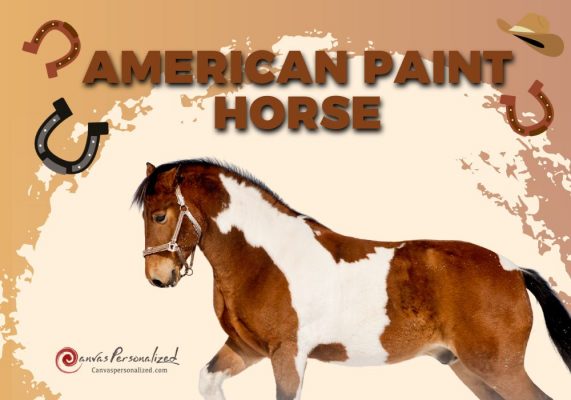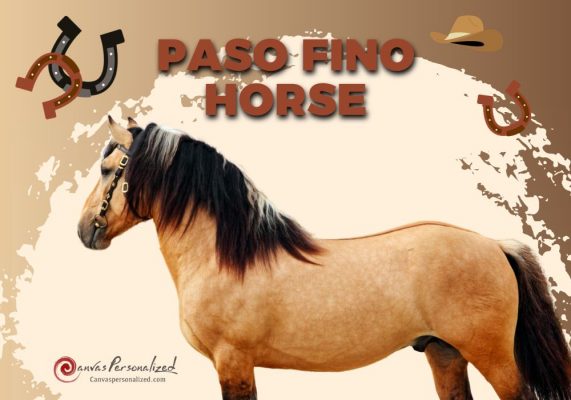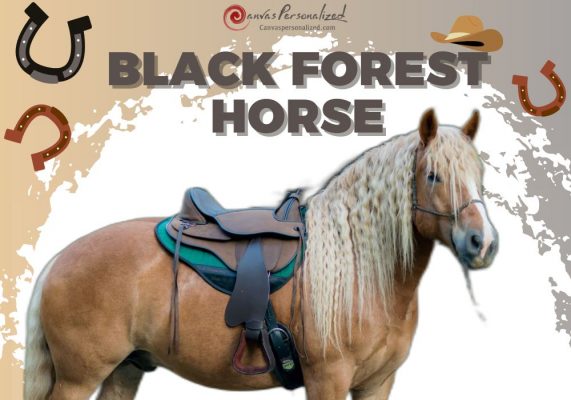The American Quarter Horse is a robust breed that can travel long distances quickly. In 2014, nearly three million horses were registered with the American Quarter Horse Association, making these horses the most common breed in the United States. Whether you seek a trustworthy ranch horse, a competitive show horse, or a loving companion, these horses can do it all. Canvas Personalized will let us learn all about this breed’s beautiful characteristics.
American Quarter Horse pros and cons
| Pros | Cons |
| A jack of all trades can excel in various sports and settings. | Susceptible to some health problems, such as hoof pain and muscle weakness. |
| A loyal and gentle companion, easy to train, and eager to please. | Need regular exercise and grooming to maintain their fit physique and shiny coat. |
| A speedy and graceful runner with a strong burst and a smooth stride. | Can be costly to purchase and maintain, depending on the pedigree and quality. |
1. American Quarter Horse Origin
The American Quarter Horse derives from Spanish and English horses that were transported into the American colonies in the 1600s. The Chickasaw horse and the Mustang were among the natural breeds used to create these equines. This cross produced a smaller but more robust horse, ideal for the burgeoning American frontier.
The Quarter Horse got its name because it was so successful in races over a distance of exactly one-quarter of a mile. In races of a quarter mile or less, the Quarter Horse may easily beat out other horse breeds. The top speed recorded for a horse is 88.5 kilometers per hour (55 miles per hour).

The stability and dependability of horses as mounts are also well-known. Cattle and other livestock benefit from their calm demeanor and willingness to oblige.
The Quarter Horse was an essential part of the United States’ westward expansion in later American history. The breed’s agility was vital to cowboys, farmers, and others for uneven terrain transportation. Although the breed has existed since the 1600s, the American Quarter Horse Association registry wasn’t formed until 1940.
2. American Quarter Horse Characteristics
American Quarter Horse Size
These horses come in a wide range of sizes, although the average American Quarter Horse height is between 14.3 and 16 hands (56 and 64 inches). They have a solid build and a wide range of hues, the most frequent of which is sorrel (a brownish red). The average size of a member of this breed is 950-1,200 pounds.
American Quarter Horse Colors and Markings

A wide range of solid colors, as well as roan, palomino, gray, grullo, buckskin, and dun, are available in American Quarter Horses. The most frequent coat color in this breed is a brownish-red called sorrel. Markings of white on the face and legs are prevalent.
Unique Features of the American Quarter
The Quarter horse has a distinctive, muscular shape that stands out from the crowd. Its look reflects its reliability, which makes it suitable for many tasks. Quarter horses are nimble and swift, even when they sprint. They are famous for their “cow sense”—a natural talent for maneuvering cattle.
3. Diet and Nutrition
American Quarter, like other horses, needs a varied diet rich in carbs, proteins, fats, vitamins, minerals, and water. Every horse is different, and they have specific dietary requirements.
Horses kept as pets are often fed a combination of hay and grain. Different regions have different hay options, so it’s best to visit a vet to determine what’s best for your horse. The horse’s age, bodily condition score, and activity level must all be taken into consideration. Carrots and apples are good treats, but they should be given sparingly.

4. American Quarter Grooming
These Quarter horses benefit significantly from daily grooming to keep their coats and skin in top condition. It is essential to ensure the horse is relaxed and has had time to disseminate its natural oils by brushing the legs, face, girth, and saddle regions before a ride. In the summer, grooming a horse after riding is beneficial so that the oils and sweat may be redistributed. Tangled manes and tails can be brushed out with a stiff brush.

5. General Health and Behavior Issues of American Quarter
American Quarter Horses often have a pleasant personality and are highly trainable, gentle, and eager to please. Nonetheless, it’s essential to be aware of the following health risks they face:
- Hyperkalemic periodic paralysis (HYPP): Unfortunately, the Quarter Horse breed has been carrying a genetic disease known as HYPP for generations. Muscle tremors, weakness, and shaking are all symptoms of HYPP in a horse. Although the disease can be controlled using low-potassium meals and eliminating alfalfa, infected horses should not be bred.
- Polysaccharide storage myopathy (PSM): Muscle glycogen accumulates abnormally in horses with (PSM), a hereditary disorder. Muscle stiffness and discomfort are common symptoms of this disease, and they tend to worsen after physical activity. PSM may have a genetic component, so horses with this condition shouldn’t be bred.
- Malignant hyperthermia: When a horse has malignant hyperthermia, it increases the likelihood of a bad reaction to the anesthetic. Before undergoing anesthesia, horses should be genetically examined to see if they carry the malignant hyperthermia gene.

6. Are American Quarter Horses for You?
This breed’s gentle nature makes it a good choice for families and beginners. It would be best to consider the horse’s personality and health when deciding its daily schedule and training methods. The American Quarter Horse is typically serene and keen to learn. These horses can do anything from farm work to contests, as well as trail riding and leisure activities.
7. How To Buy Or Adopt An American Quarter
The first and foremost thing to do when you want to buy this horse is to look for a professional horse trainer that you can rely on. The trainer can assist you in finding appropriate horses for you and help you assess potential buys. The American Quarter Horse price can vary greatly and depends on what you need the horse for, its age, health, and lineage, between $3,000 and $100,000.

When you have chosen a horse you like, spend enough time with it and make it do the tasks you plan to do with it after buying it. It is strongly advised to have a qualified veterinarian do a thorough pre-purchase check-up to detect any possible sickness or lameness problems and to determine the horse’s fitness for the buyer’s intended use.
>>> Read more:
- Discover 19 Popular Pony Breeds A-Z with Stunning Images
- Azteca Horse Breed: Alluring Blend of Elegance and Strength
- Exploring Mustang Horse Breed: Wild Origins and Traits
In conclusion, the American Quarter Horse is a versatile and adaptable breed. Its sturdy and robust physique, friendly and laid-back character, and quick and agile motion make it a favored choice for various equestrian activities, from farm work to contests. Read more Canvas Personalized articles to learn about unique pet breeds and how to look after them.










